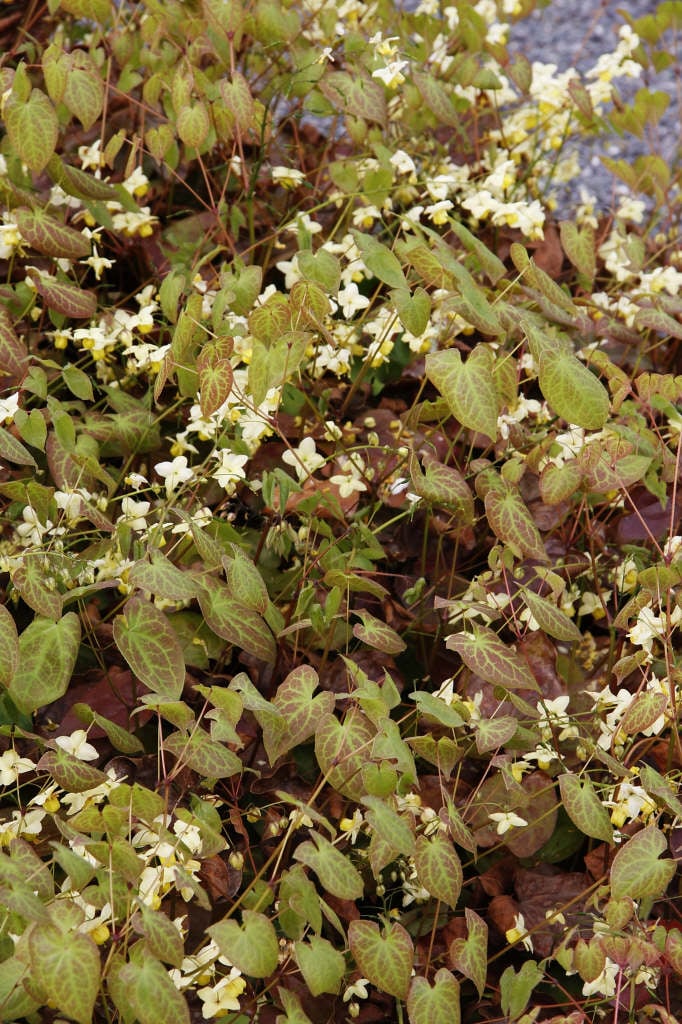Epimedium × versicolor 'Sulphureum'
barrenwort 'Sulphureum'
An evergreen perennial, to 35cm in height, forming a clump of red-tinted, light green leaves. Primrose-yellow flowers, 2cm in width, are carried in open sprays
Synonyms
Epimedium macranthum 'Sulphureum'Epimedium × youngianum 'Sulphureum'
see moreEpimedium sulphureum
Epimedium luteum
Size
Ultimate height
0.1–0.5 metresTime to ultimate height
2–5 yearsUltimate spread
0.1–0.5 metresGrowing conditions
Moisture
Moist but well–drained, Well–drainedpH
Acid, NeutralColour & scent
| Stem | Flower | Foliage | Fruit | |
| Spring | Yellow | Green Red | ||
|---|---|---|---|---|
| Summer | Green | |||
| Autumn | Green | |||
| Winter |
Position
- Full shade
- Full sun
- Partial shade
Aspect
West–facing or South–facing or North–facing or East–facing
Exposure
Sheltered Hardiness
H7Botanical details
- Family
- Berberidaceae
- Native to GB / Ireland
- No
- Foliage
- Deciduous
- Habit
- Spreading branched
- Genus
Epimedium are rhizomatous perennials with evergreen or deciduous, ternately or pinnately divided leaves, and open sprays of small, bowl-shaped flowers, often with prominent spurs, in mid to late spring
- Name status
Accepted
How to grow
Cultivation
Grow in fertile, moist but well-drained, humus-rich soil in partial shade; shelter from cold, dry winds. Can tolerate full sun, full shade or slightly drier soils
Propagation
Propagate by division in autumn or after flowering
Suggested planting locations and garden types
- Rock garden
- Flower borders and beds
- Ground cover
- Banks and slopes
- Underplanting of roses and shrubs
Pruning
Pruning is unnecessary. Evergreen foliage can be sheared over in early spring to tidy old leaves and show off the flowers but in cold gardens this may expose new growth to frost damage
Pests
May be susceptible to vine weevils
Diseases
May be susceptible to a virus
Get involved
The Royal Horticultural Society is the UK’s leading gardening charity. We aim to enrich everyone’s life through plants, and make the UK a greener and more beautiful place.
